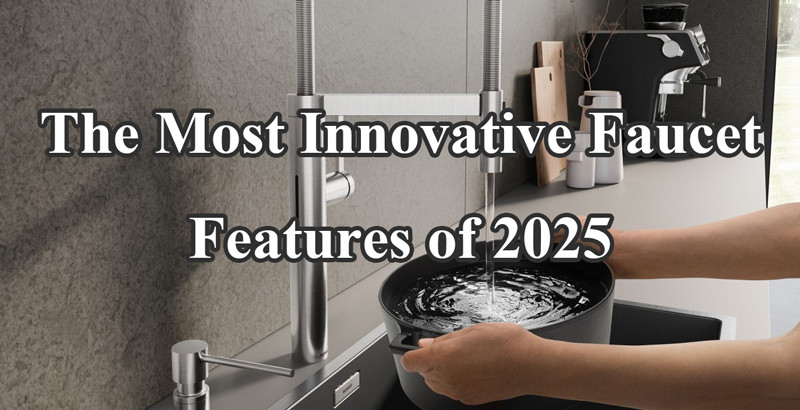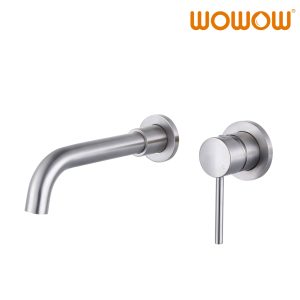
In recent years, artificial intelligence (AI) has revolutionized various industries, from healthcare and transportation to entertainment and finance. However, one sector where AI’s impact is increasingly being felt is in the development of fixtures—those essential elements of our built environment that we interact with daily, such as faucets, lighting, and bathroom accessories. As AI technology continues to advance, it is reshaping how fixtures are designed, manufactured, and utilized, making them smarter, more efficient, and more personalized than ever before.
The Influence of AI on Fixtures Development
1. AI in the Design Process: Enhancing Creativity and Precision
AI is playing a significant role in the design phase of fixture development. Designers can now use machine learning algorithms to explore endless possibilities for form, function, and style that might otherwise go unnoticed. AI-based software can analyze vast amounts of data, including customer preferences, industry trends, and material performance, to generate design options that are not only aesthetically pleasing but also highly functional.
For example, AI-driven generative design tools enable designers to create fixtures with optimal structural integrity and minimal material waste. By inputting parameters such as weight distribution, material strength, and design constraints, AI can suggest innovative fixture shapes and structures that might not be immediately intuitive to human designers. This process not only accelerates the design timeline but also leads to more sustainable and resource-efficient products.
In addition to efficiency, AI is also opening up new frontiers of creativity in fixture design. Designers can experiment with complex geometries, unusual materials, and futuristic features that were previously impractical or impossible to conceptualize. Fixtures can be tailored to specific environments, creating bespoke solutions that match the needs and aesthetics of both residential and commercial spaces.
2. AI and Smart Fixtures: A New Era of Functionality
One of the most significant ways AI is influencing fixture development is through the integration of smart technology. Smart fixtures, such as faucets, lights, and thermostats, are becoming increasingly common in both homes and businesses. These fixtures are equipped with AI capabilities that allow them to adapt to user behavior, learn preferences, and optimize performance.
For example, smart faucets equipped with AI can detect a user’s motion and adjust water flow accordingly, minimizing waste and ensuring the right amount of water is dispensed. Some faucets can even learn the optimal water temperature for each user and automatically adjust settings to provide the most comfortable experience. In commercial settings, AI-powered fixtures can help businesses monitor water usage patterns and make real-time adjustments to reduce waste and increase efficiency.
In lighting, AI is being used to create adaptive systems that adjust the brightness and color of lights based on time of day, the presence of occupants, or even the mood of the space. For instance, a bathroom light might gradually dim in the evening to signal that it’s time to wind down, while a kitchen light could brighten when it detects increased activity, ensuring that the space is always well-lit without wasting energy.
Moreover, AI-powered fixtures are beginning to integrate with broader smart home systems. Faucets, showers, and mirrors can now sync with voice assistants like Amazon Alexa, Google Assistant, and Apple Siri, allowing users to control their environment hands-free. For example, a smart mirror might use AI to suggest skincare products based on weather conditions, time of day, or skin type, while a smart faucet can provide voice-activated temperature adjustments.
3. AI in Fixture Manufacturing: Efficiency and Customization
AI is also having a profound effect on the manufacturing side of fixture development. With the help of AI-driven automation and robotics, fixture manufacturers can improve production efficiency, reduce costs, and ensure higher-quality products. AI is enabling the development of advanced manufacturing techniques, such as 3D printing and additive manufacturing, which allow for the creation of highly customized fixtures with minimal waste.
Through AI-powered predictive maintenance systems, manufacturers can monitor their machinery in real-time and predict potential breakdowns before they happen. This reduces downtime, ensures a smooth production process, and minimizes disruptions to the supply chain. Additionally, AI can optimize inventory management by predicting demand and ensuring that materials are sourced in the most cost-effective and sustainable manner.
Customization is another area where AI is making an impact. Consumers are increasingly looking for personalized products, and fixtures are no exception. AI allows manufacturers to create fixtures that are tailored to individual preferences, from color and finish to functionality. Using data gathered from consumer interactions, AI systems can offer personalized fixture recommendations based on room size, existing décor, and lifestyle needs. For example, a customer interested in a new kitchen faucet may be presented with options that match their unique aesthetic, water conservation goals, and ergonomic preferences.
4. AI and Sustainability: Designing for a Greener Future
Sustainability is one of the most important considerations in fixture development today, and AI is playing a pivotal role in making fixtures more environmentally friendly. With increasing demand for eco-friendly products, AI is helping designers and manufacturers create fixtures that use fewer resources, reduce energy consumption, and generate less waste.
In the design phase, AI can analyze the environmental impact of different materials and production methods, helping companies select the most sustainable options. For instance, AI tools can predict the carbon footprint of a fixture design by factoring in material sourcing, energy consumption during manufacturing, and product longevity. This information allows companies to make informed decisions about which materials and processes to use, resulting in products that are better for the environment.
Furthermore, AI can optimize the energy usage of fixtures during their operation. Smart fixtures can monitor and adjust energy consumption based on real-time data, such as occupancy patterns, ambient light levels, or temperature changes. For example, AI-powered faucets can help reduce water waste by adjusting flow rates depending on the user’s needs or activity. In turn, these energy-saving measures help reduce the carbon footprint of both residential and commercial spaces.
5. AI and Fixture Maintenance: Predicting and Preventing Problems
AI is not only changing the way fixtures are designed and manufactured; it is also transforming the way they are maintained. AI-powered fixtures can monitor their own performance and detect issues before they become major problems. For example, a smart faucet could alert the homeowner to a clog or leak, or a bathroom light could notify the user when the bulb is nearing the end of its life.
Predictive maintenance systems use AI to analyze historical data and usage patterns, allowing for proactive repairs and replacements. This reduces the need for costly emergency repairs and extends the lifespan of fixtures. Additionally, AI can help businesses manage maintenance schedules more effectively, ensuring that high-traffic areas such as bathrooms or kitchens are always in top condition.
Conclusion: The Future of Fixtures is AI-Driven
The integration of artificial intelligence in fixture development is paving the way for smarter, more sustainable, and more personalized home and commercial environments. From design and manufacturing to functionality and maintenance, AI is enhancing every aspect of fixture development, making them more efficient, adaptable, and user-centric.
As AI continues to evolve, we can expect even more innovation in fixture technology, with more advanced features, greater energy efficiency, and even more personalized experiences. Whether it’s a bathroom faucet that adjusts to your preferences or a lighting system that adapts to your mood, AI is transforming fixtures into intelligent components that seamlessly integrate into our lives, enhancing convenience, comfort, and sustainability. As we look toward the future, AI will undoubtedly continue to shape the next generation of fixtures, creating smarter, greener, and more intuitive products for the homes and businesses of tomorrow.
 WOWOW Faucets
WOWOW Faucets







您好!Please sign in